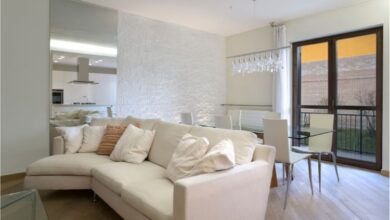The Stages of Building Custom Home Designs: An Ultimate Guide

Building a home from scratch is an exciting and rewarding journey. However, it can also be a complex process that requires careful planning and execution. Have you ever wondered how a concept turns into a dream home? From the initial design phase to the final touches, each stage is critical in creating a space that perfectly aligns with your vision.
When it comes to custom home designs, understanding the building stages is essential to ensure every detail is crafted to your specifications. This knowledge empowers you to make informed decisions and stay involved throughout construction. This guide will walk you through each step of the construction process, helping you make informed decisions and achieve the home you’ve always imagined.
1. Initial Planning and Conceptualisation
The first stage of building a custom home begins with planning and conceptualising your ideas. Working with architects and designers, you’ll outline your layout, style, and critical features. This is the time to consider what elements are most important to you, whether it’s an open floor plan, a specific number of bedrooms, or unique architectural details.
During this phase, it’s crucial to establish a budget and timeline. Understanding your financial parameters will help guide the design process and ensure the project stays on track. Once you have a clear vision and realistic plan, you can confidently move forward.
2. Securing Permits and Approvals
Before construction can begin, you’ll need to obtain the necessary permits and approvals from local authorities. This stage ensures your custom home complies with all building codes and regulations. Working with professionals who understand the permitting process can help streamline this stage.
They can assist with submitting the correct documentation and navigating any potential challenges. Once the permits are secured, you’ll be ready to break ground on your new house.
3. Site Preparation and Foundation
With permits, the next step is preparing the site and laying the foundation. Site preparation involves clearing the land, grading the area, and setting up temporary utilities. The foundation is a critical component of your house, providing the structural base that supports the entire building. Whether it’s a slab, crawl space, or full basement, ensuring the foundation is constructed correctly is essential for the longevity and stability of your house.
4. Framing and Structural Work
Framing is constructing the house’s skeleton, including the walls, floors, and roof. This stage brings your design to life as the shape and layout form. The framing must be precise and adhere to the design specifications, as it sets the stage for all subsequent work. The framing quality is critical to the house’s structural integrity.
5. Interior and Exterior Finishing
The finishing stages of your home are where the true personality of the space shines through. Interior finishing includes painting, flooring, cabinetry, and installing fixtures. These elements bring colour, texture, and functionality to your house, transforming it into a livable space. A well-finished exterior enhances curb appeal and provides the first impression of your home.
6. Final Inspection and Handover
The final stage of building a custom home involves a thorough inspection to ensure everything meets the required standards. This includes checking structural elements, systems, and finishes. Any necessary adjustments or corrections are made during this time. Once the inspection is complete and everything is up to code, the keys to your new home are handed over.
When designing and building a custom home, every detail matters, including the roof, which plays a critical role in both protection and aesthetics. Working with skilled roofer contractors ensures that your new home’s roofing system is not only durable but also aligns with your design vision. Choosing the right materials and installation methods can make all the difference in long-term performance and the overall look of your custom home.
The journey of building custom home designs is a detailed and rewarding process that transforms a vision into reality. By understanding each stage, from initial planning to final inspection, you can confidently explore the construction process and achieve a home that reflects your unique style and needs. Home designs allow for creativity and personalisation, ensuring that every corner of your home truly reflects who you are and how you live.


